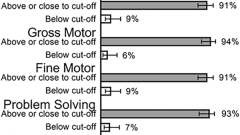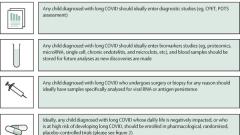ABSTRACT
Importance: In adults, diagnoses of new-onset type 2 diabetes (T2D) have increased following diagnosis with COVID-19, but whether this occurs in children is unclear.
Objective: To determine whether risk of incident T2D diagnosis is increased during the 6 months after SARS-CoV-2 infection among children.
Design, Setting, and Participants: This retrospective cohort study used electronic health records from the TriNetX analytics platforms between January 1, 2020, and December 31, 2022. Pediatric patients aged 10 to 19 years without preexisting diabetes were eligible for inclusion. Data were analyzed from August 15 to September 15, 2023, with supplemental analyses January 20 and August 8 to 13, 2024.
Exposures: Diagnosis of COVID-19 or a non–COVID-19 respiratory infection.
Main Outcomes and Measures: New diagnosis of T2D compared by risk ratios (RRs) and 95% CIs at 1, 3, and 6 months after index infection.
Results: The main study population included 613 602 patients, consisting of 306 801 with COVID-19 (mean [SD] age at index, 14.9 [2.9] years; 52.8% female) and 306 801 with other respiratory infections (ORIs) but no documented COVID-19 (mean [SD] age at index, 14.9 [2.9] years; 52.6% female) after propensity score matching. Risk of a new diagnosis of T2D was significantly increased from day of infection to 1, 3, and 6 months after COVID-19 diagnosis compared with the matched cohort with ORIs (RR at 1 month, 1.55 [95% CI, 1.28-1.89]; RR at 3 months: 1.48 [95% CI, 1.24-1.76]; RR at 6 months: 1.58 [95% CI, 1.35-1.85]). Similar results were found in the subpopulation classified as having overweight or obesity (RR at 1 month: 2.07 [95% CI, 1.12-3.83]; RR at 3 months: 2.00 [95% CI, 1.15-3.47]; RR at 6 months: 2.27 [95% CI, 1.38-3.75]) and the hospitalized subpopulation (RR at 1 month: 3.10 [95% CI, 2.04-4.71]; RR at 3 months: 2.74 [95% CI, 1.90-3.96]; RR at 6 months: 2.62 [95% CI, 1.87-3.66]). Similar elevation in risk was found at 3 and 6 months when excluding patients diagnosed during the interval from the index date to 1 month after infection.
Conclusions and Relevance: In this retrospective cohort study of children and adolescents aged 10 to 19 years, the risk of an incident diagnosis of T2D was greater following a COVID-19 diagnosis than in children diagnosed with ORIs. Further study is required to determine whether diabetes persists or reverses later in life.

